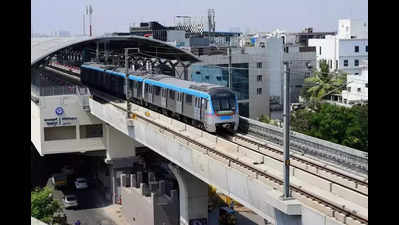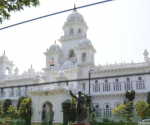Hyd metro draws up first plans for JBS transit hub

Hyderabad: Amid the growing demand for metro services, the Hyderabad Airport Metro Limited (HAML) has started work on the model metro hub at Jubilee Bus Station (JBS) in Secunderabad — a first for the city. The project, which is expected to hit the floors in around two years, will see three metro lines converge in a state-of-the-art integrated facility and will be spread over 30 acres of state and defence land.
Exclusively sharing the details with TOI, HAML officials said that metro hub was being developed through a public-private partnership (PPP) model.
“It is high time that we decongested the city. With this world-class hub, we’re not just solving transportation issues but creating a new centre of urban activity that can compete with the best in the world,” said HAML managing director NVS Reddy, citing the example of metro stations in Tokyo which have several passenger-centric features.
“We initially asked for five acres, but the Telangana chief minister who has a grand vision for the city’s metro asked us to aim higher, suggesting we utilise up to 50 acres,” he added.
Cellar parking, bus complex
The hub’s design incorporates multiple levels of functionality. “We’re planning extensive cellar parking at the stations, while the ground level will accommodate both metro stations and a revamped bus complex,” explained Reddy. The existing five-storey structure at the JBS Parade Ground station, which currently houses the green line, has already demonstrated the potential for mixed-use development, with office spaces being actively utilised.
A distinctive feature of the hub will be its architecture, with three individual metro stations connected by skywalks. This design differs from the integrated station approach seen at Ameerpet and the Mahatma Gandhi Bus Station (MGBS), where multiple lines share a single structure. The new station, which will connect to Medchal, will be constructed parallel to the existing five-storey building of JBS Parade Ground station, completing the triad of interconnected lines. “We already have about five acres near the stations which are being used for parking, and there are other dilapidated defence buildings in the vicinity, the new station can be built here with ease.”
Skywalk network
The network of skywalks connecting the individual stations will ensure seamless passenger movement while maintaining operational efficiency. The existing blue and green line stations at JBS are already connected through skywalks, providing a ready template for the integration of the third line.
The PPP model specially chosen for the JBS hub development is expected to attract significant private investment. “This particular hub will be developed entirely through the PPP route, ensuring world-class infrastructure and amenities. There won’t be any need to travel to western Hyderabad for the best shopping or dining,” Reddy confirmed.
Malls, offices also on the cards
Commercial development will be a key component of the hub. “The best of restaurants, malls, and office complexes will be part of this development. JBS will transform into a vibrant centre of activity,” Reddy stated. The commercial spaces will include shopping areas, dining establishments, and modern co-working facilities, catering to the evolving needs of urban professionals.
The project marks a significant departure from traditional metro station design in India. With Delhi’s Kashmere Gate being the only other such station, the integration of three different metro lines with a bus station, coupled with extensive commercial development, represents a new approach to transit-oriented development.
















